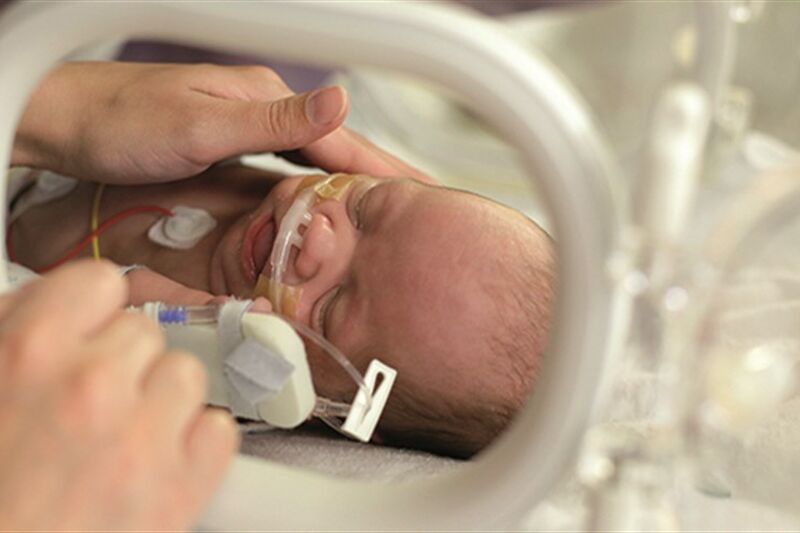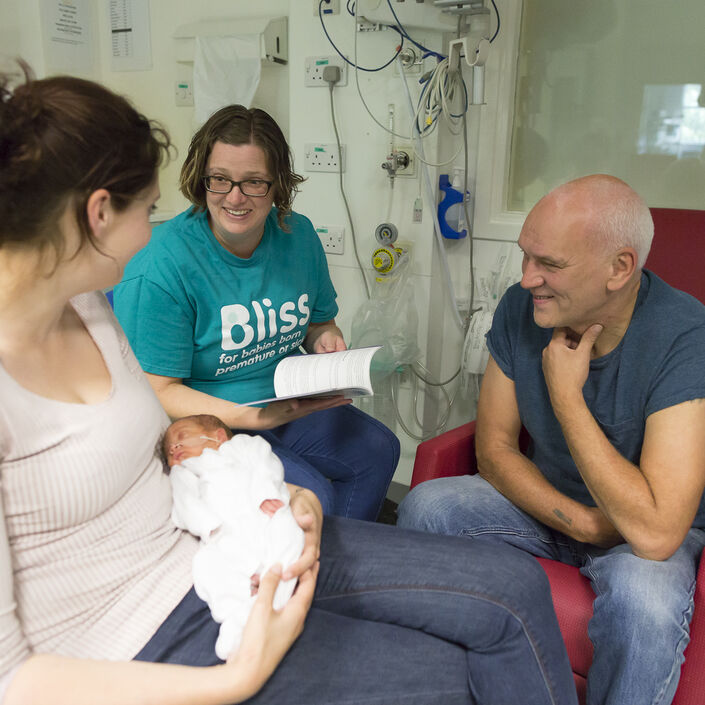Preparing for your baby to go home on oxygen
Before you go home, you should have a discharge planning meeting which will include healthcare professionals involved in your baby’s care. In this meeting, they will plan for your baby to go home on oxygen. This is a good opportunity to ask if you have any questions.
A healthcare professional will visit your home to support you with any practical issues. This could include where to store the oxygen tanks or install more plug points. They will also visit you regularly to support you with any practical issues and will advise you as early as possible if you need to make any adaptations to your home.
Your oxygen supplier will tell your gas and electricity supplier that you are storing oxygen in the home. This is important so that they can prioritise you if there is a power cut in the home. You will need to register your baby with the GP before the oxygen is ordered.
Things to consider before going home:
Ask questions about the equipment and how to monitor the oxygen supply so that you feel comfortable using it.
Ask a healthcare professional how to check the prongs and tubes are connected correctly and how to check for blockages.
Contact your home and car insurers and your landlord, if you have one, to tell them you will be using home oxygen.
Check your smoke alarms so you know that they work properly. Some oxygen suppliers will also contact the Fire and Rescue service to tell them that you are using home oxygen. The Fire and Rescue service may contact you to do a fire safety check for your home.
Check who you can get support from or answer any further questions once you have been discharged. You may be being supported with this transition home by a community nurse, another member of the neonatal team or health care professional. It can help to make sure you have details of how to contact them should you need to. Checking contact details of the oxygen supplier may be helpful too.
The supplier will show you how to use the equipment and will talk to you about the safety measures when you have oxygen at home. Unit staff will also train you to use the equipment. You could ask a family member or a friend to be there when the oxygen is installed, so that they also know what to do. It may also be helpful to take notes when you are being trained, so you can refer to it if needed.
Safety when your baby is going home on oxygen
Oxygen is a fire hazard, so it is important to be very careful around flammable substances and to keep cylinders away from heat sources. Is it very important that you do not smoke or allow anyone to smoke near your baby. This includes e-cigarettes. The NHS website has some more information about what to be aware of.
How will I know what level of oxygen to use?
A healthcare professional supporting you with your discharge from the unit will explain the amount of oxygen that your baby needs. It is not advised to reduce or increase oxygen without your healthcare professional’s advice, as this can be dangerous. If you think the level needs changing, talk to your community neonatal nurse or seek medical advice.
You should expect the levels to vary as the needs of your baby change, but we would always recommend that the baby is checked by a health care professional before changes are made.
Going outside with your baby on oxygen
Some parents worry about going outside with their baby on oxygen, especially as there is a lot of equipment to move about. But many families are able to go out and about with oxygen.
You will need to have a supply of portable oxygen to do this. Portable oxygen is prescribed alongside the oxygen supply requested for use inside your home. Portable cylinders will come with a carry bag to make it easier to travel in the pushchair or car.
When you are ready to go out, remember to check the oxygen flow and contents of your portable oxygen supply before leaving the home. When using a portable cylinder, check that the oxygen supply is enough for the time you will be out.
If you use public transport or taxis, some transport companies may not take oxygen on board, so check this is okay first.
Moving around the home with oxygen
Moving around the home may seem challenging. The best and safest way to move around is to take your baby to the room you want to go to, and then come back for the low flow meter and tubing. The oxygen supplier may be able to provide long tubing to allow you to move around the house.
What to do in an emergency
The unit staff will talk to you about who to contact if you have concerns about your baby when they have left hospital. Your oxygen supplier will provide you with a 24-hour emergency contact number. If you are worried your baby is not getting enough oxygen, is having difficulty breathing or might be seriously ill, call 999.
We have more information about signs to look out for if you think your baby might be becoming unwell.
Oxygen costs
Using oxygen in the home can impact your energy bills. If your baby comes home with oxygen, you may be eligible for a rebate from the oxygen supplier for the cost of electricity usage. Scope’s website has more information on this.


